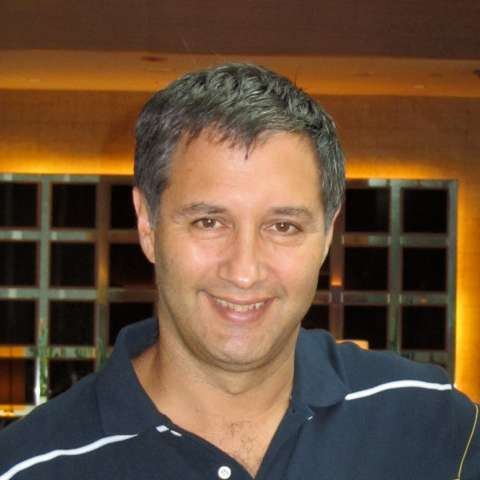For any opera lover, a first visit to Bayreuth is something of a pilgrimage to the holy land. Musically, I wasn’t disappointed, as the Dutchman’s leitmotif rose softly from the invisible orchestra, soon to be enveloped by the swirling storm brewed up by Wagner and conductor Christian Thielemann. The orchestra here is one of extraordinary virtuosity, and Thielemann is a thoughtful conductor who knows his Wagner backwards, forwards and sideways. You’ll hear many more muscular renderings of Der Fliegende Holländer, but none that approach Thielemann's immense levels of clarity and detail.
There were vocal performances to match. Adrienne Pieczonka was an outstanding Senta: the timbre of her voice was meltingly gorgeous, intonation perfect and her command of line impeccable as she ran through the gamut of emotions from dreaminess to anger to infatuation to steely resolve. Pieczonka’s performance was the more remarkable since, as a Bayreuth veteran pointed out to me after the show, there was a basic directorial mistake of putting a curtained off stage-within-a-stage in Act II, which, he explained, would have made it very difficult for the singers to hear their own voices against the orchestra. Samuel Youn was drafted into the title role at late notice after an unfortunate incident with Yevgeny Nikitin, a journalist and a swastika tattoo: the management must have been delighted with their choice as he produced a musically precise and impassioned performance. Franz-Josef Selig seemed uncomfortable with his acting duties as Daland, but thoroughly in command of the music; Michael König as Erik was a shade off full power in Act II but pulled out all the stops in Act III; Benjamin Bruns was a clear-voiced and appealing Steersman.
Jan Phillipp Gloger is an acclaimed theatre director who is relatively new to opera: his debut was at Augsburg in 2010 and this is his first opera at Bayreuth. According to an interview in the programme notes, Gloger started with Wagner’s concept of “longing for calm amidst life’s storms,” searched for a metaphor that suited our times more closely than the sea and, with designer Christoph Hetzer, came up with “a complex data network, an ungovernable world market, a metropolis seen from the air.” The staging that results from this concept is notable by the total absence of the sea or any ships larger than a rowing boat.
Hetzer's set in Act I is impressive: a giant metallic installation with disturbing lights and flashing numbers, and Gloger’s idea of putting us at sea in a hyper-modern world works well enough - although I can’t help feeling that the golden opportunity for a coup de théâtre presented by the arrival of the Dutchman’s ghostly ship is rather lost when the arrival consists of Samuel Youn walking on-stage with a shiny black item of cabin luggage. There was a certain level of humour in the “spinning chorus” being conducted in the packing and dispatch area of a factory making fans, the costumes of the sailors (translate: an army of fan salesmen in grey trousers and waistcoats) are really rather elegant, and the costumes of the girls as they arrive for the dance are varied and drop-dead gorgeous.
But as soon as we get to Act II scene 2 and Act III, the production concept unravels horribly. This part of the libretto is almost entirely about sailors and ships, and to be true to his thesis about being “at sea in a corporate miasma,” Gloger would have needed to invent a whole raft of visual metaphors which related the libretto to this thesis. Quite simply, he didn’t. Rather, the whole thing lapsed into quirkiness - the Steersman portrayed as factory foreman proudly displaying a giant poster of their new fan, stock code number N1-H1L, which is later unaccountably burnt to a crisp at the arrival of Dutchman’s ghostly crew (another team of salesmen, perhaps from a competing fan manufacturer, in darker waistcoats with unexplained black patterns painted on the sides of their heads). I find it hard to imagine a greater disconnect between the words being sung and the action on stage.
Ultimately, though, I didn’t care all that much, because the quality of the orchestral playing was so outstanding, together with the unbelievable sound from the Bayreuth chorus and the top notch singing of Pieczonka and Youn. I lost count of the “wow” moments of individual wind playing or of thrills from the perfectly executed playing of a string passage, and Thielemann taught my ears more about this music than I’ve ever heard before. And, of course, this is a very special opera house, its spaciousness, the simple elegance of the interior, the perfect line of sight from every seat in the house and, most of all, the unique acoustic from that sunken orchestra pit. I’d have preferred a production that hit closer to its mark - whether traditional or conceptual - but no production could have spoiled such a remarkable musical evening.


